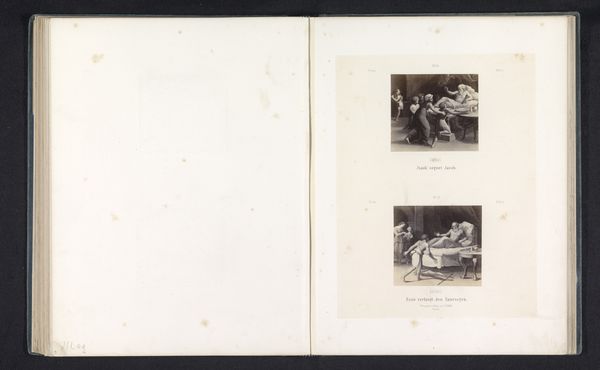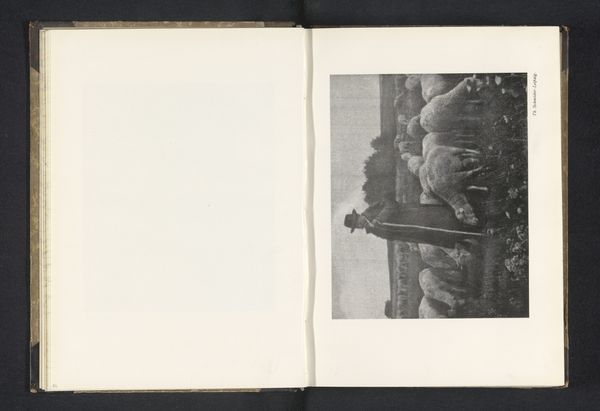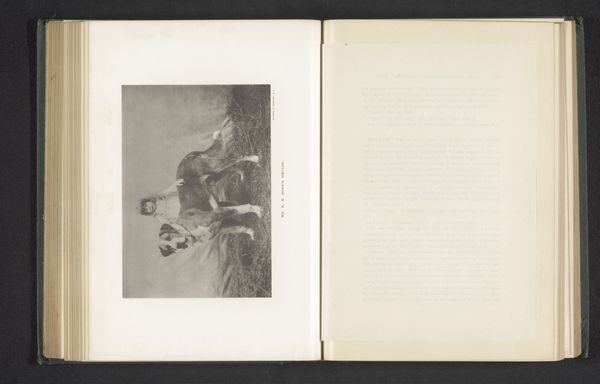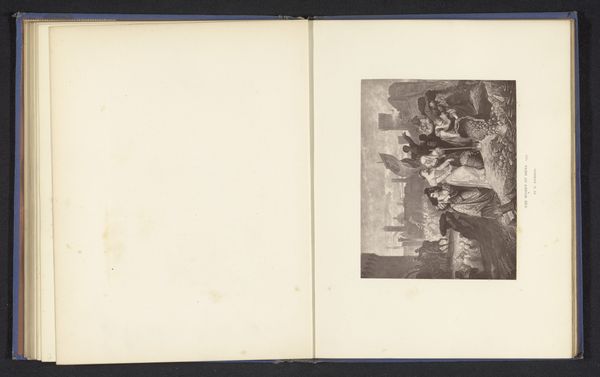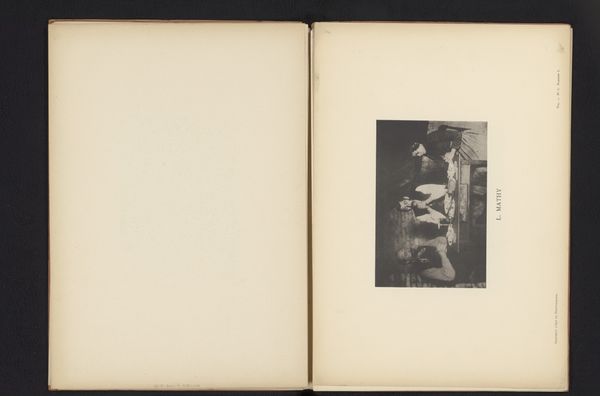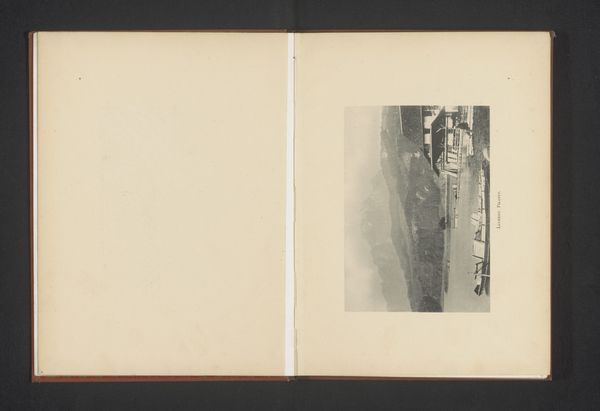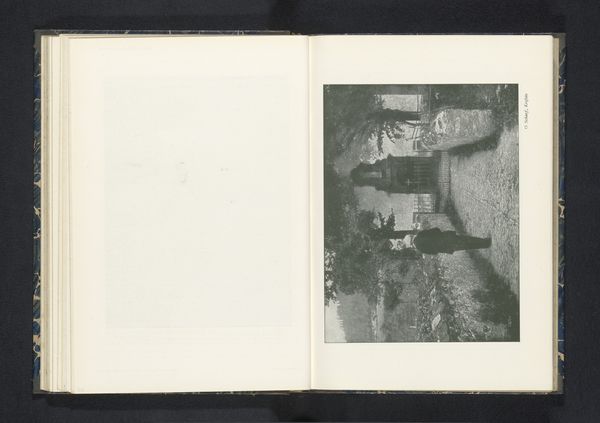
Reproductie van een schilderij van een boer die een koe opjaagt door Julien Dupré before 1908
0:00
0:00
painting, print
#
painting
# print
#
landscape
#
genre-painting
#
realism
Dimensions: height 92 mm, width 172 mm
Copyright: Rijks Museum: Open Domain
Editor: Here we have a print, a reproduction of a painting by Julien Dupré, before 1908, called 'Reproduction of a painting of a farmer chasing a cow.' There's something dynamic about it, with a strong sense of movement. How do you interpret this work? Curator: This piece offers a glimpse into the romanticized view of rural life often presented in 19th-century art. The labor of the farmer is presented in harmony with nature, but it often obscures the very real struggles of the working class. What sociopolitical contexts were influencing this portrayal? What are the subtle cues in the artwork hinting towards labor divisions? Editor: I see what you mean. It looks serene, but you are right to point out that it simplifies a complicated reality of the farmer. Can we see that romanticized view of labour in the use of light? Curator: Exactly. Consider the use of light – it softens the scene, creating a pastoral idyll, almost staged for consumption. This romanticized representation raises questions about power dynamics. Who is this art made *for*, and whose experiences are being valorized versus whose are being erased? Editor: So, it’s not just a snapshot of farm life, but also a social commentary. What would you say is its resonance today? Curator: Today, it's crucial to look at such works critically, acknowledging their artistic merit, while interrogating the underlying ideologies and power structures. They act as a way for us to evaluate and contrast today’s societal expectations versus historical representations. Does this romanticized view persist today? Editor: That makes me see it with fresh eyes. Thank you for unpacking those complexities! Curator: My pleasure. Art should prompt these kinds of questions and conversations, constantly re-evaluating our understanding of history and its relationship to the present.
Comments
No comments
Be the first to comment and join the conversation on the ultimate creative platform.

